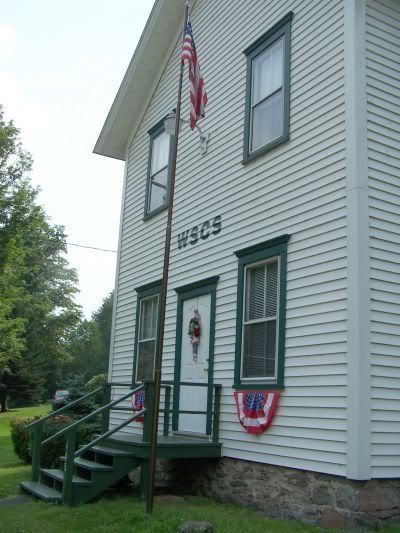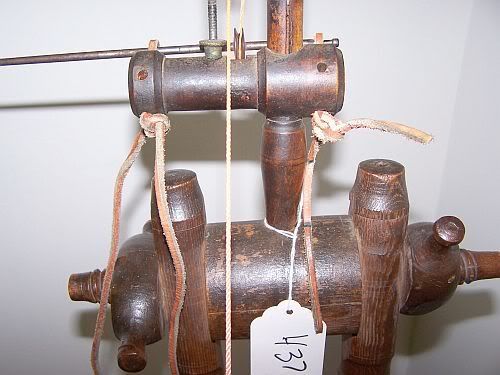
Last weekend, The Greene-Dreher Historical Society hosted an open house, and Grace Hatton and I were demonstrating and speaking about spinning, spinning wheels and general topics related to the craft.
It was the first time I "dressed" for an occasion. My ensemble included a pinner apron, and the Lacy Winged Shawl that I knit from linen.
I carried a authentic reticule, and wore a pair of antique spectacles that worked just fine. While doing some research on what I should wear... I was enlightened when I discovered that because my skirt and blouse and shoes were from the wrong century, I was deemed to be a "farby" in certain circles.
A salesgirl from a dress shop in Gettysburg emphasized to me that "no one wants to be called a farby." No matter, it was all for fun.
Grace wore a costume too. Her ensemble was less farby-ish. She is pictured here spinning on her Londonderry New Hampshire Wheel. What you cannot see from this photo is the beautiful petticoat she is wearing, along with a pair of pantaloons that she made.
I've enjoyed learning about period dress, and will continue to explore this area. There are many ways to learn, but the easiest is to just look at old photographs or paintings, and take note of the styles.
Soon after we had arrived, the secretary of the historical society informed us that there was a Great Wheel in the upstairs portion of the building. She was wondering if we would like to take a look at it.
It was a lovely wheel that was in very good condition. It had barrel tensioning, and a wheel head like I have never seen before. Fred noticed that the accelerating wheel had a wooden post on one side, and on the other, a metal thread with a bolt at the bottom that could adjust the head, much like the maidens on my wheel would. It was very interesting. If anyone else has seen a wheel head like this, I'd welcome your comments and any information you might have about it. It had no markings on it, but it looks to be a Denio wheel head.







8 comments:
Oh hey, I know Grace from the spin list...we chatted about her wheel 'cause my husband works in Londonderry NH (we live in Deerfield though). Looks like the two of you had a great time, even if you were a Farby!
I dressed like Grace in 1976 to march in a bi-centennial parade...boy that was a long time ago. I am old! I know I know far be it for you to argue with me right?!
Hey, I wouldn't know a farby from a hole in the ground, but I would love to spend a day dressing up and spinning.
Good to know how the farby thing got started!
The fabric for new potentially period dresses just came. It came from Periodfabrics.com. They have fustian (whatever that is) so, that must mean it's good, right?
The linen shawl is a beauty on your outfit!!
You sure made a cute farby. I love to see the reenactors with their period dress on. I have a friend that does these things. She even sews her outfits by hand to get that authentic look.
Hey, if you were a farby, then I'm sure I always am when I dress and spin...but IMO the most important part is for people to learn about spinning and appreciate that, and if I'm not dressed 100% period, oh well.
Oh, and as for Finn's comment about Fustian - learned this weekend in a Blackwork demo that it is a linen/cotton blend cloth. I think the ones we were using were 40/60, though I believe the term refers to various linen/cotton blends.
Your dress is very lovely.
You could say you're part of a group who adapted to new clothing styles very slowly.
Offhand I can think of several people groups/sect with a dress code that date to the 1800's - Amish, 1910 - Old Mennonites, 1930 - a religious group in this area commonly called Flatlanders, 1940 - Hutterites... whoa, off on a tangent.
Post a Comment